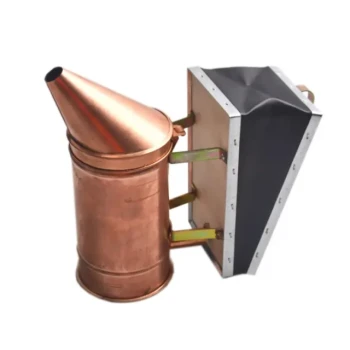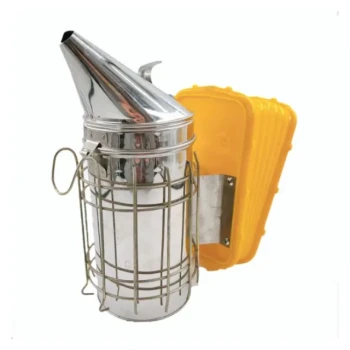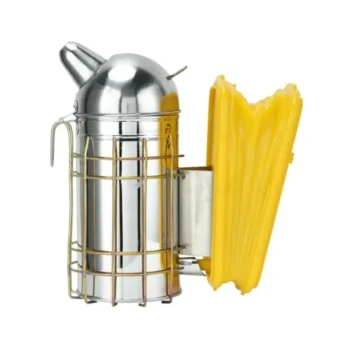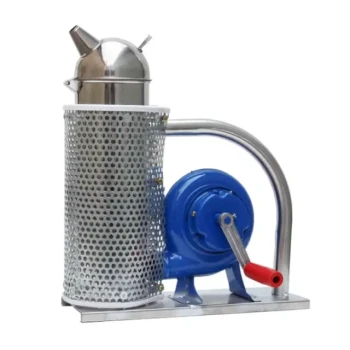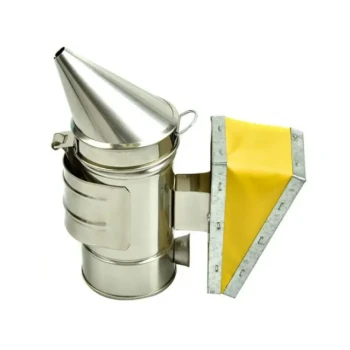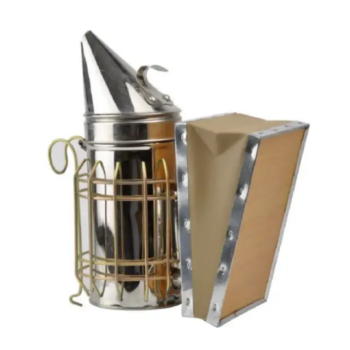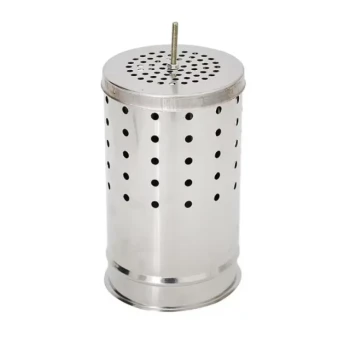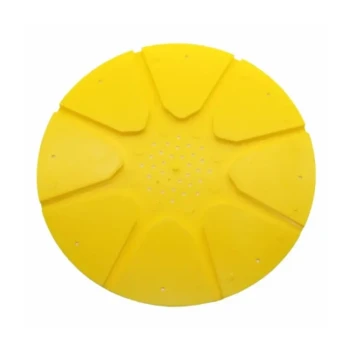To calm bees, beekeepers use a specialized tool called a bee smoker, which is essentially a metal can with bellows that gently puffs smoke over the hive. The fuel is not a specific chemical but rather a variety of natural, slow-burning materials such as dry pine needles, untreated paper egg cartons, or punky, rotten wood.
The core principle is not to "subdue" the bees, but to interrupt their defensive communication and trigger a natural survival instinct. Effective smoking is less about the quantity of smoke and more about the timing and strategic application.
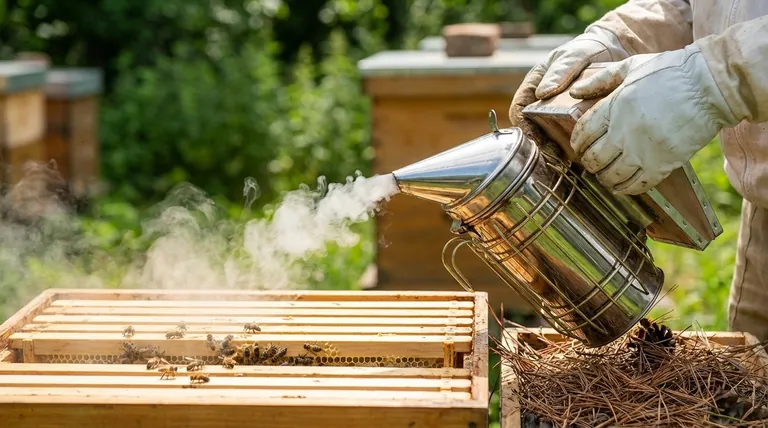
How Smoke Calms a Beehive
Understanding the "why" behind smoking is crucial for using it effectively and safely. The smoke works on two distinct levels: biological and behavioral.
Interrupting Communication
Bees communicate primarily through chemical signals called pheromones. When a guard bee perceives a threat, it releases an alarm pheromone that alerts the rest of the colony to attack.
Smoke effectively masks these pheromones. It overwhelms the bees' sensitive antennae, making it impossible for them to detect the alarm signal. This prevents a small disturbance from escalating into a full-scale defensive response.
Triggering a Survival Instinct
Smoke also triggers a primal, fire-related survival response. When bees sense smoke, their instinct tells them the hive may be burning and they might need to abandon it.
In preparation, they begin to gorge themselves on honey, storing as much energy as possible for the potential journey to a new home. When a bee's abdomen is engorged with honey, it becomes physically difficult for it to pivot its body into the stinging position. This makes them significantly more docile.
The Right Way to Use a Smoker
Technique is everything. The goal is to create a cool, white smoke and apply it with purpose, not to blast the hive with hot air and ash.
Before Opening the Hive
Think of your first puffs of smoke as knocking on the door. Apply two to three gentle puffs into the hive entrance.
Wait for one to two minutes before opening the hive. This gives the smoke time to circulate and for the bees' behavioral response to begin.
During the Inspection
After cracking the lid open, puff a small amount of smoke across the tops of the frames. This moves the guard bees down and keeps the colony calm.
Use smoke sparingly from this point on. Only add another puff or two if you notice the bees becoming agitated or flying at you. The mantra is "less is more."
After a Sting
If you are stung, the bee's stinger releases a potent alarm pheromone, marking you as a target. Immediately smoke the affected area (your suit or glove) to mask this pheromone and prevent follow-up stings from other bees.
Common Pitfalls and Best Practices
Using a smoker incorrectly can be counterproductive, agitating the bees instead of calming them.
Avoid Using Too Much Smoke
Over-smoking can stress the colony. If you fill the hive with dense smoke, the bees may become confused and agitated rather than calm. A gentle waft is far more effective than a thick cloud.
Ensure the Smoke is Cool
Hot smoke can injure or kill the bees. A properly lit and managed smoker will produce a cool, dense, white smoke. If you see embers or hot ash coming out, you need to add more fuel or adjust your technique.
Dress Appropriately
Bees are more defensive toward dark colors and fuzzy textures, as these mimic natural predators like bears. Always wear light-colored (white or tan) and smooth-surfaced clothing for your own safety and to keep the bees calmer.
Applying This to Your Hive Work
Your approach to smoking should adapt to the situation and the temperament of your specific colony.
- If your primary focus is a routine, calm inspection: "Knock" with a few puffs at the entrance, wait, and use minimal smoke under the lid before proceeding slowly.
- If your primary focus is dealing with an aggressive hive: Use smoke more deliberately to move bees away from the area you need to work in, creating a clear space.
- If your primary focus is preventing a defensive chain reaction: Immediately smoke any stings on your gear to mask the alarm pheromone before other bees can react to it.
Ultimately, a smoker is a tool for communication, allowing you to work alongside your bees respectfully and safely.
Summary Table:
| Aspect | Key Insight |
|---|---|
| Tool Used | Bee Smoker (metal can with bellows) |
| Common Fuels | Dry pine needles, untreated paper, rotten wood |
| Primary Effect | Masks alarm pheromones, prevents defensive chain reaction |
| Secondary Effect | Triggers instinct to gorge on honey, making stinging difficult |
| Key Principle | Use cool, white smoke sparingly; timing is crucial |
Ensure your apiary operations run smoothly and safely with the right equipment. HONESTBEE supplies commercial apiaries and beekeeping equipment distributors with high-quality, reliable bee smokers and essential beekeeping supplies through our wholesale-focused operations. Let us help you equip your beekeepers for success.
Contact our wholesale team today to discuss your needs and browse our catalog.
Visual Guide
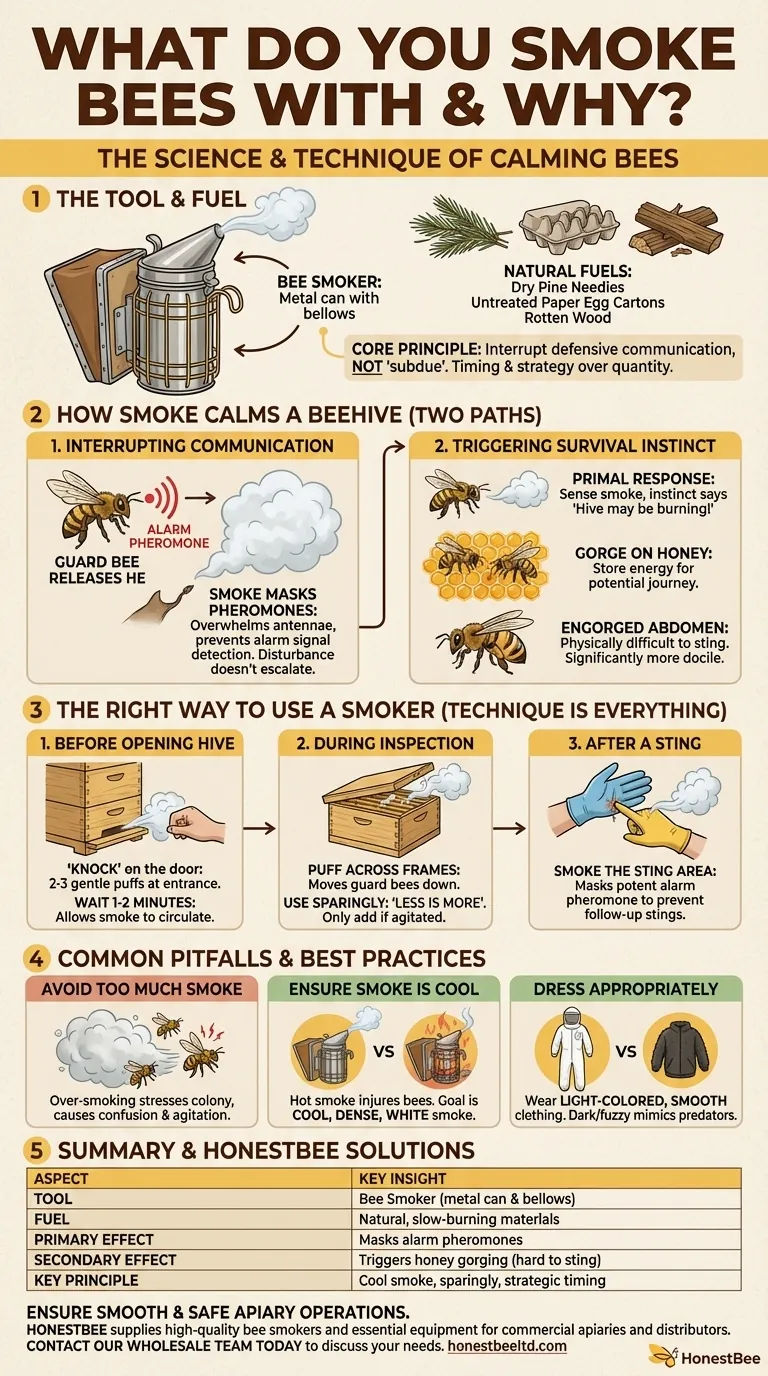
Related Products
- European Stainless Steel Bee Smoker for Honey Bee Hive
- Premium Traditional Copper Bee Smoker with Bellows
- Professional Bee Smoker with Elongated Spout and Durable Bellows for Beekeeping
- Heavy-Duty Bee Smoker with Durable Plastic Bellows for Beekeeping
- Heavy Duty Manual Bee Smoker Blower for Beekeeping
People Also Ask
- How does a smoker help during hive inspections? The Key to Calm, Safe Beekeeping
- What are the benefits of smoking bees? Achieve Safer, Calmer Hive Inspections
- Can you use too much smoke on bees? The Right Way to Use a Bee Smoker for Calm Inspections
- What factors should be considered when choosing a bee smoker? Find the Right Tool for Safe, Effective Hive Management
- What are the advantages of a high-quality bee smoker? Achieve Calm, Confident Hive Management

